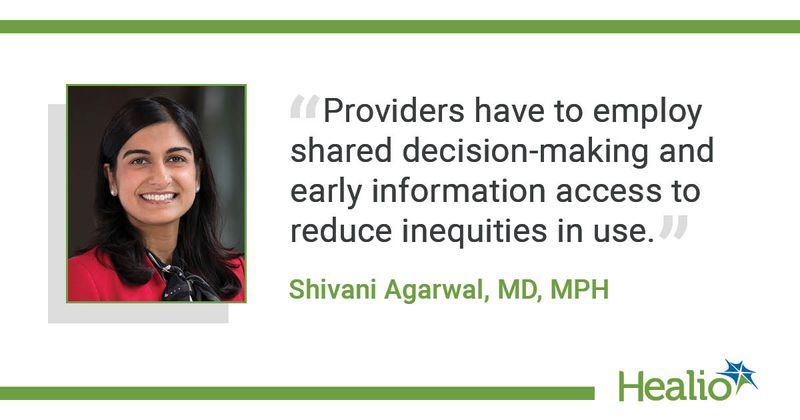Shared decision-making, optimism can reduce racial inequities in diabetes technology
Click Here to Manage Email Alerts
A lack of shared decision-making between providers and patients can contribute to racial-ethnic inequity in use of diabetes technology for Black and Hispanic young adults with type 1 diabetes, according to study data.
“Our study is the first to show deeper provider-level factors that need to be modified to reduce inequities in technology use and outcomes among underrepresented young adults with type 1 diabetes,” Shivani Agarwal, MD, MPH, an assistant professor of medicine at Albert Einstein College of Medicine and director of the Supporting Emerging Adults with Diabetes program at Montefiore Health System, in New York, told Healio. “The clinical implications of our findings are that providers must modify their approaches to include patients earlier in the introduction and discussion of diabetes technology as well as explore patient concerns early and often.”

Agarwal and colleagues conducted semi-structured interviews with 40 young adults aged 18 to 25 years with type 1 diabetes (62% women; mean age, 21.5 years). Participants were recruited from the Fleischer Institute for Diabetes and Metabolism at Montefiore Medical Center and Children’s Hospital in Montefiore in the Bronx, New York. Young adults spoke either English or Spanish and did not have to use diabetes technology to participate. Participants were asked about information access to diabetes technology, conversations they had with providers about technologies, and factors that went into decision-making on whether to use devices. The findings were published in Diabetes Technology & Therapeutics.
Of the 40 participants, 29 were Hispanic and 11 were non-Hispanic Black. The study cohort had a mean HbA1c of 10.3%. At the time of the interview, 13 participants did not use technology, 15 used an insulin pump, eight used a continuous glucose monitor, and four used both an insulin pump and CGM.
Communication issues with providers
Most young adults said the only information they received on diabetes technology came from their provider. For those who heard of technology previously, most said they were told about it, but not offered it. Other participants said they heard about insulin pumps and CGM only during the study interview. Many young adults who did have a discussion with their provider about technology said the decision on technology use was made for them.
“Providers were the main gateway to technology and even information access about available technologies was lacking for many patients with long type 1 diabetes duration in specialty care,” Agarwal said. “Moreover, it was very commonly endorsed that providers judged and decided on ineligibility based on infrequency of checking blood sugars or suboptimal HbA1c levels.”
Participants said they became excited and more willing to use technology when their provider communicated with optimism or explained the benefit of technology for their individual needs.
Patient-level concerns
Some participants said they were hesitant to use diabetes technology due to unfavorable experiences or anticipated issues. Among the concerns were a mistrust in technology accuracy, potential hassles with using the device, possible interference with daily activities and a stigma surrounding diabetes. However, young adults who became knowledgeable about the benefits of technology said it allowed them to become advocates for using a device.
The overwhelming majority of participants said cost was not an issue due to Medicaid plan coverage. Of the study population, 72% were insured through Medicaid.
Agarwal said the findings unveil ways providers can better communicate with patients so that more Black and Hispanic young adults are open to using diabetes technology.
“We found that provider approaches that were optimistic and tailored to the individual patient by using shared decision-making was endorsed as an acceptable approach to increasing technology use,” Agarwal said. “More providers have to employ shared decision-making and early information access to reduce inequities in use.”
For more information:
Shivani Agarwal, MD, MPH, can be reached at shivani.agarwal@einsteinmed.org.

